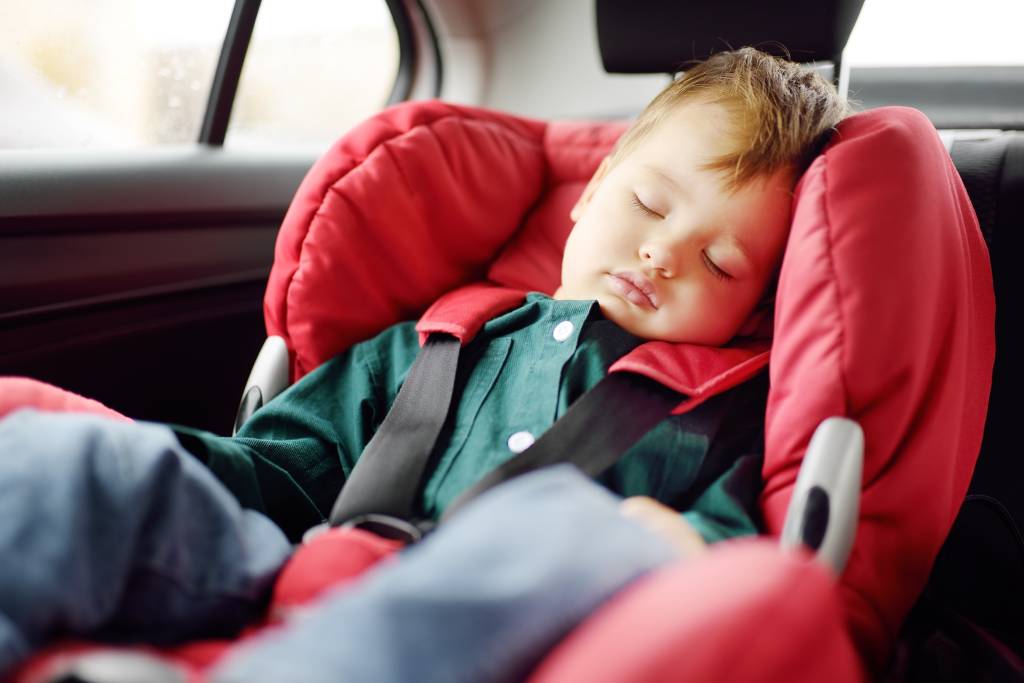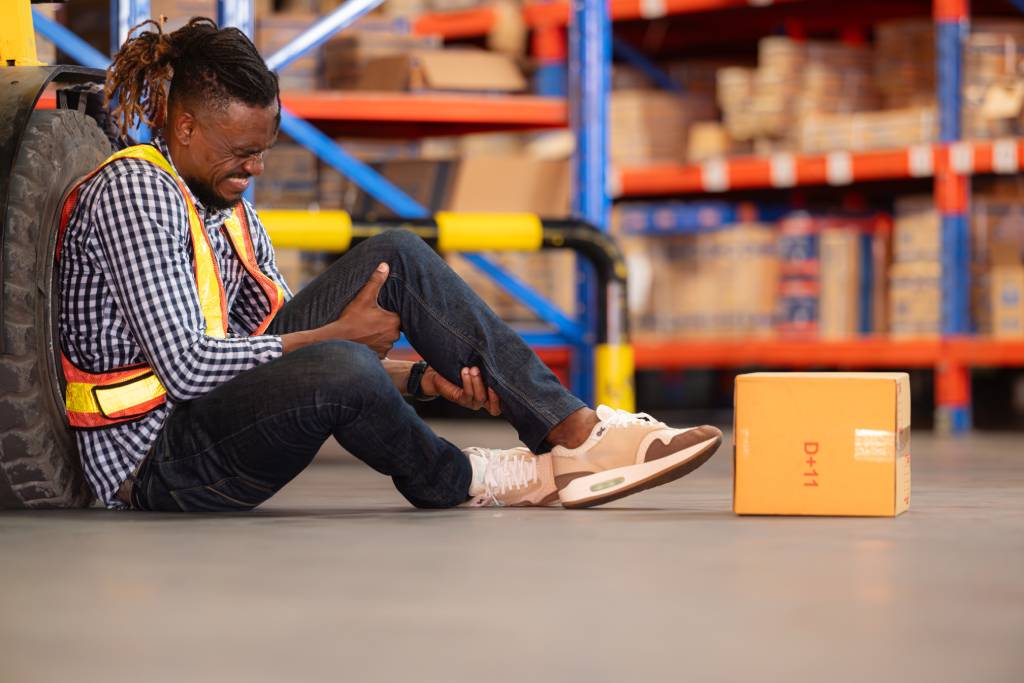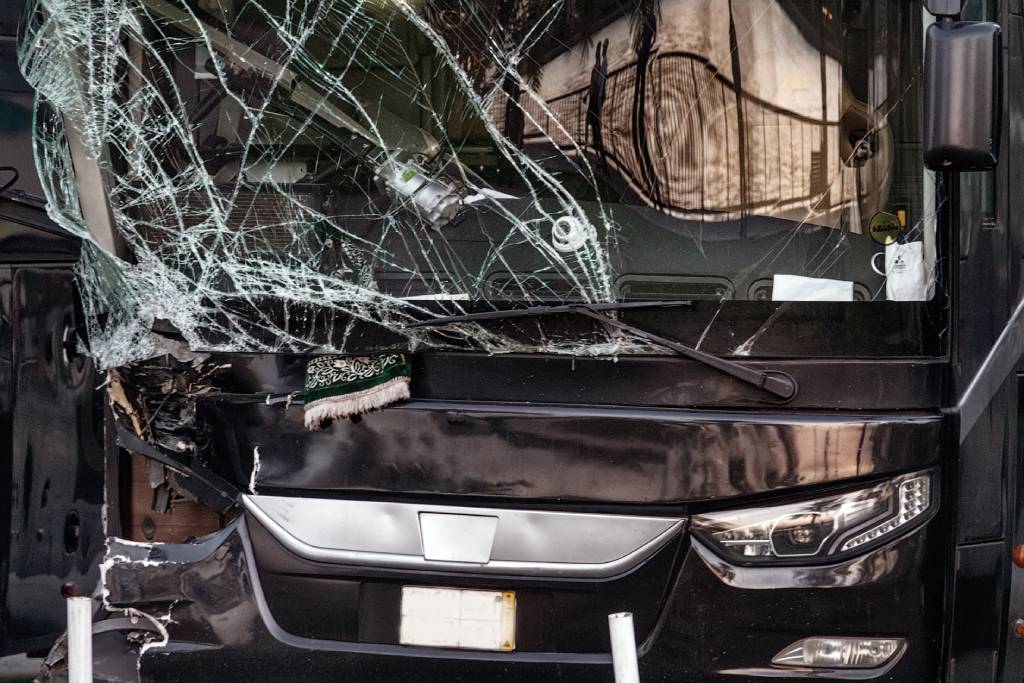Pedestrians are some of the most vulnerable road users. Unlike drivers, or even motorcyclists, they have nothing to protect them from impact. If they’re hurt in a traffic accident, their injuries could prove fatal.
It’s unsurprising, then, that pedestrians are assumed to “always” have the right of way. Many drivers believe that they must always give way to pedestrians, no matter where they’re crossing the street. However, this is not strictly true. In fact, drivers and pedestrians must all exercise caution when using our roadways.
So, when must you yield to pedestrians in CA? And what are the crosswalk rules for drivers? As car accident attorneys, we know how confusing the law can be. But we’re here to make it simple.
Below, our lawyers explain pedestrian right of way laws in California. And we cover what you should do if you’re an injured pedestrian.
How Common Are Pedestrian Accidents in California?
Pedestrian casualties – and fatalities – are worryingly common. This is not just a California problem, either. It’s a nationwide issue. Research shows that:
- Around 7,485 pedestrians died on US roadways in 2021. This could be an underestimate.
- Numbers are increasing year on year. Preliminary data suggests that we’ll keep seeing more rather than less fatalities.
Of course, it’s not just fatalities we must worry about. Pedestrians can be injured without suffering grievous wounds. What’s concerning is the trend towards more, rather than fewer pedestrian casualties.
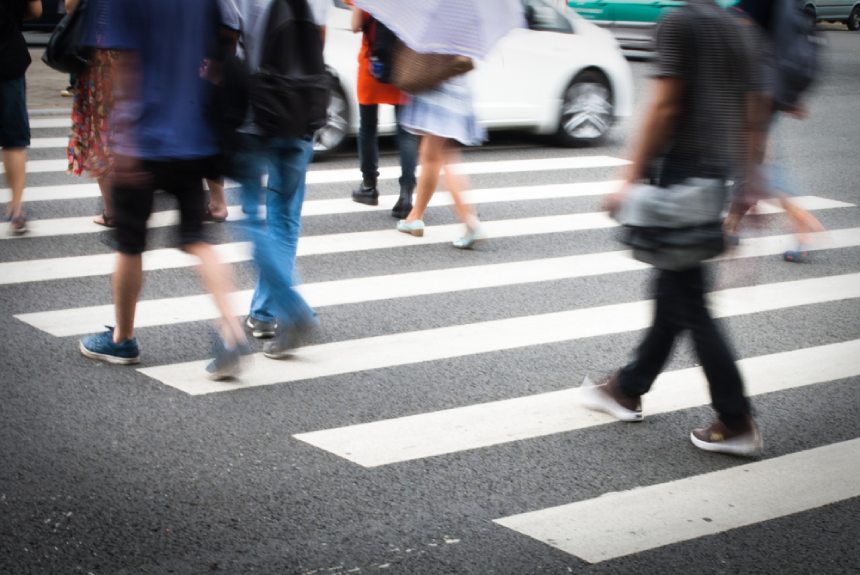
What could be behind the growing number of pedestrian accidents? There could be many contributing factors. Reasons for increasing pedestrian casualties may include:
- Darkness, which makes pedestrians less visible
- More people walking rather than driving
- Roadway design flaws
- Increased traffic through urban areas
- Careless or distracted driving
- Use of technology while driving
- Lack of clarity around pedestrian and crosswalk law
Other potential causes include alcohol use and driver fatigue. Whatever the underlying cause, the outcome is the same: our pedestrians are vulnerable. And we need to understand how to protect each other on California roadways.
Protecting Pedestrians in California
California is spearheading several efforts to reduce pedestrian fatalities and injuries. These strategies include classroom education, community events, presentations, and workshops.
Several California cities have set goals through the Vision Zero initiative to eliminate traffic-related fatalities. Caltrans has also developed pedestrian safety measures at high-risk locations using a pedestrian safety toolbox with 47 countermeasures to enhance pedestrian safety, including signal timing enhancement, intersection and roadway design changes, and new pedestrian signs and markings.
The focus on pedestrian safety is not surprising given the continuous increase in pedestrian injuries and fatalities in California.
Pedestrian Accident Injuries
If we consider the types of injuries pedestrians might sustain, it’s easy to see why crosswalk laws matter. Pedestrian injuries include, but are not limited to:
- Head injuries: Without head protection, pedestrians may suffer a blow to the head in an accident. Such a blow can result in a head injury such as a contusion, laceration, concussion, or more serious brain damage.
- Brain damage: Pedestrian accidents are a common cause of traumatic brain injury. The severity of the brain damage associated with a brain injury depends on the affected area of the brain and the force of the blow or depth of penetration. Brain damage can result in a spectrum of symptoms, including comas, vegetative states, or brain death.
- Spinal injuries: The spinal cord is the bundle of nerves that allows the brain to communicate with the rest of the body, and any damage to the spinal cord affects the brain’s ability to send signals to different parts of the body. Victims of spinal injuries often suffer from permanent changes in their strength, sensation, and other bodily functions. Severe spinal injuries can cause paralysis.
- Neck and back injuries: The neck and back may take the brunt of any pedestrian accident. Neck and back injuries often require time-consuming rehabilitation and physical therapy.
- Internal damage: If a pedestrian suffers a blow to the body, internal damage can occur, including to organs such as the heart, lungs, and kidneys. Internal bleeding and damage to organs can be hard to diagnose, with symptoms often developing days or weeks after the accident.
- Broken bones and fractures: Whether or not a vehicle comes into contact with a pedestrian, they are at risk of suffering broken bones. Pedestrians may throw out their arms to brace for a fall after vehicles strike them. The impact their arms absorb often results in broken bones or fractures. Serious breaks can require surgery and/or physical therapy.
- Cuts, bruises, strains, and sprains: While often less serious than the above injuries, cuts, bruises and other more superficial injuries can still limit the victim’s range of motion or ability to participate in daily tasks.
Getting Medical Help After a Road Accident
Have you been hurt in a road accident as a pedestrian? Do not delay seeking medical care – even if you “feel” fine.
- Some injuries, like head injuries, take hours, days, or even weeks to develop. The sooner a doctor evaluates your injuries, the better.
- Your medical records, including an ER visit, can be used as evidence in your case.
- Any prescriptions and related costs may be considered “losses”. If you have a personal injury claim, you may be able to claim these losses back.
- The longer you wait to seek help, the easier it is for the at-fault party to question the delay. They may attempt to say that your injuries are unrelated to the crash.
Our pedestrian accident attorneys can explain, in more detail, how seeking medical attention may help your case.
Understanding Pedestrian Right of Way Laws in California
Now we understand the gravity of pedestrian accidents, let’s look at what the law says about the “right of way”.
What Is the Right of Way?
The right of way determines who has priority in certain traffic situations such as intersections. If you have the right of way, you should be able to continue driving while oncoming traffic yields or stops.
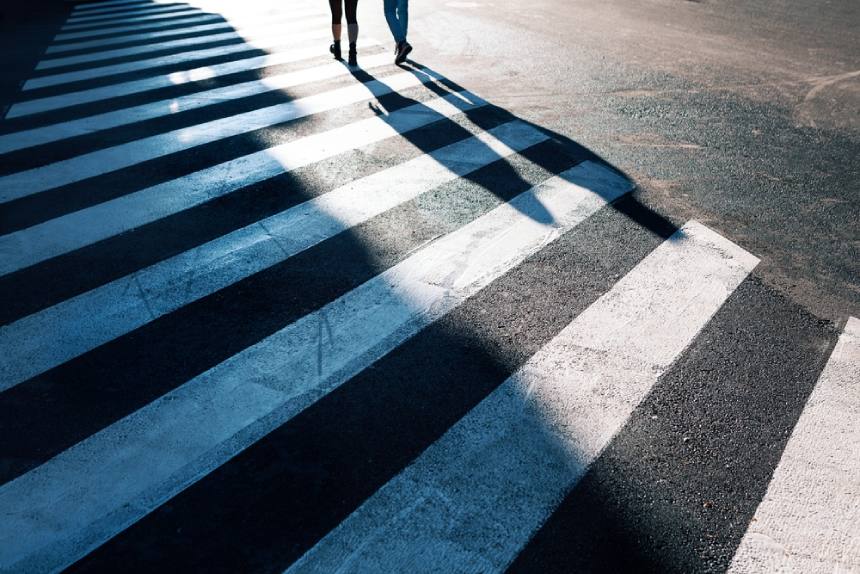
If there’s a pedestrian involved, right of way means that drivers must yield to let pedestrians cross. In other words, the rule determines when the vehicle has priority, and when the pedestrian has priority.
Even if you have the right of way, don’t assume other drivers will respect this. Drive safely by preparing to keep driving, but being aware you may need to stop.
The California Vehicle Code has clear rules on the right of way for drivers. We understand they can be confusing, though, so we’ll cover some major rules below.
Does a Pedestrian Always Have the Right of Way?
In many cases, the answer is yes. Pedestrians typically take priority, or have the right of way. However, it’s not always the case. For example, pedestrians do not have the right of way if they break the road rules.
The most common scenarios which cause confusion are:
- Intersections
- Sidewalks
- Crosswalks
Let us consider each scenario in turn.
Pedestrian Rights of Way at Intersections
Pedestrians normally have the right of way at intersections. They should be able to cross safely. Drivers are expected to yield to them. However, they don’t technically have the right of way if there’s a “do not cross” or similar warning light flashing.
That said, drivers should anticipate pedestrians crossing and be prepared to stop if someone enters the roadway.
Does this mean that pedestrians can simply cross however – and whenever – they want? No. They must still be careful. But they do, normally, have the right of way.
Pedestrians and Sidewalks
Pedestrians in California have the right of way on sidewalks. They should be able to move around a sidewalk safely without fear of a car collision. A driver must always yield to pedestrians on sidewalks in California.
Crosswalk Rules for Drivers
If you’re a driver, you need to understand how crosswalks work, and when you need to stop. Let’s consider the rules.
What Is a Crosswalk?
A crosswalk is a specific part of the road set aside for pedestrians. It’s usually clearly marked with white lines. However, a crosswalk can be anywhere that doesn’t have a “no crossing” sign. You often find them at intersections, and where there are lights or stop signs.
Yielding at a Crosswalk
Drivers are expected to yield to pedestrians at crosswalks. Pedestrians normally have the right of way here.
Drivers should slow down and stop if they approach a crosswalk with a pedestrian waiting to stop. And they must allow sufficient time for the pedestrian(s) to cross safely. This is especially true for vulnerable pedestrians e.g. the elderly.
When You Must Yield to Pedestrians
We can summarize the pedestrian right of way laws in California as follows.
Pedestrians normally have the right of way. Other road users, including drivers and motorcyclists, should yield to pedestrians. Specifically, pedestrians have the right of way in the following scenarios:
- At crosswalks
- At intersections unless there’s a red light or “do not cross” sign flashing
- When there is no safe space set aside to cross the road
- On sidewalks
When Pedestrians Do Not Have the Right of Way
On the other hand, here are some examples of when there’s no right of way for pedestrians.
- Walking across an intersection when there’s a “don’t walk” signal or red light.
- Running into the street.
- Crossing between moving traffic when there’s no crosswalk.
What happens if a pedestrian causes a crash due to their own carelessness? They could be held liable if the crash causes property damage or bodily injury. That’s why it’s so crucial to remember that we’re all sharing the road together. We need to look out for each other and move safely – the rules apply to pedestrians, too!
What Happens if a Driver Fails to Yield?
If a driver fails to yield when legally required, it’s a traffic violation. If the violation causes a crash, and they injure the pedestrian, they could face a civil lawsuit. Other penalties include:
- Driving points
- License suspension
- Fines
- Higher insurance premiums (as a consequence of the crash)
Depending on the nature of the violation, the driver may also face criminal penalties e.g. for a DUI. Even misdemeanor violations can lead to fines and/or time spent behind bars.
Establishing Fault for a Pedestrian Accident
Claiming compensation means proving that someone else caused your injuries. In other words, someone else’s negligent or reckless actions injured you.
An experienced attorney can assist you in determining who caused your injuries. They will help you gather evidence to build a case.
Parties who might be at fault include:
- A negligent driver. If you were in a marked or unmarked crosswalk and a driver violated the California Code requiring them to yield the right-of-way to you, they have acted negligently—as long as the car wasn’t so close as to create an immediate hazard. Additionally, if a driver failed to exercise due care on any other roadway, they are also at fault.
- The driver’s employer: If the negligent driver acted in the scope of their employment at the time of the accident, such as a delivery driver on the job, their employer is responsible for their actions. You may prefer to seek recovery from the employer who is more likely to have a large insurance policy.
- Other pedestrians: While less common, another pedestrian’s negligence can cause an accident. For example, another pedestrian might knock you to the ground or into traffic. These scenarios are complicated when it comes to establishing fault and a lawyer can help you sort through the facts.
- The local government: Local infrastructure makes a big difference in pedestrian safety, including sidewalks, crosswalks, and traffic signals. If traffic signals are missing or broken, the local government may have failed to live up to its duty of care to pedestrians.
- The vehicle manufacturer: A manufacturer has an obligation to test a vehicle before putting it on the market. They must only sell products that are safe for the public. If a vehicle malfunction, such as a brake failure, caused or contributed to an accident, the manufacturer is responsible for the resulting injuries.
Identifying the party responsible for your injuries is critical to securing compensation for your injuries. If your injuries were someone else’s fault, that person (or entity) may need to pay for your damages, including medical expenses, lost wages, damaged or destroyed property, pain and suffering, and emotional distress.
In addition to helping you build a case against the negligent party, a lawyer can work with you to prepare a comprehensive damage demand that will be an important tool as you consider any settlement offers and if your case goes to trial.
Many pedestrian accident cases also involve the driver’s insurance company. You should expect the driver or their insurance company to make one or more settlement offers. A settlement provides a faster result and often gets money to the victim more quickly than a trial. However, settlement offers often fall far short of the recovery the victim deserves.
Be sure to consult with your attorney before accepting any settlement offer. Otherwise, there’s a risk you will settle for less in damages than you deserve. And you will lose your right to claim further compensation.
Safety Tips for Pedestrians
We all have a part to play in making California roadways safer. If you’re a pedestrian, here’s how you can protect yourself on the road.
- Always use designated crosswalks or marked intersections.
- Obey traffic signals.
- Check it’s safe before you step onto the roadway.
- Avoid texting, talking, or scrolling on your phone while crossing the road.
- Don’t run or sprint. Walk at a safe pace for your ability.
- Avoid stepping off the sidewalk, especially on busy roads.
Driver Safety Tips
Drivers can help keep pedestrians safe by following these tips.
- Use caution when approaching any crosswalk or intersection.
- Do not honk at pedestrians. You may startle them – particularly if they’re blind or otherwise disabled.
- Give people enough time to cross. Stop in plenty of time.
- Don’t stop anywhere in the middle of a crosswalk. Brake in time to leave the crosswalk clear.
- Do not pass a vehicle stopped at a crosswalk. There may be a pedestrian crossing.
Contact an Experienced California Pedestrian Attorney Today
In California, pedestrian right of way laws can be confusing. That’s why a lawyer will be an important partner in each step of your pedestrian accident case.
The May Firm has a history of securing results for our injured clients. Our award-winning lawyers focus on getting the best outcomes for our clients and we approach each case with compassion and experience.
We cannot guarantee success. However, we’ll listen to you, understand your situation, and explain your options. If you have a case, we’ll help you secure the damages you deserve.
The May Firm has more than 22 years of experience, a 99% recovery rate, and collects zero fees unless we recover money on our clients’ behalf.
If a pedestrian accident injured you or a loved one, contact The May Firm today at (866) 619-6685. Or, schedule a free consultation through our website.
Disclaimer: The content in this article is provided for general informational purposes only and may not represent the current law in the recipient’s jurisdiction. The article should not be interpreted as professional legal advice from The May Firm or the individual author, nor is the information intended to substitute for legal counsel on any subject matter. The article, nor any of the information included, should not be used to act or refrain from acting without seeking the appropriate legal or other professional advice from a lawyer licensed in the recipient’s jurisdiction. Any reliance you place on such information is strictly at your own risk.

